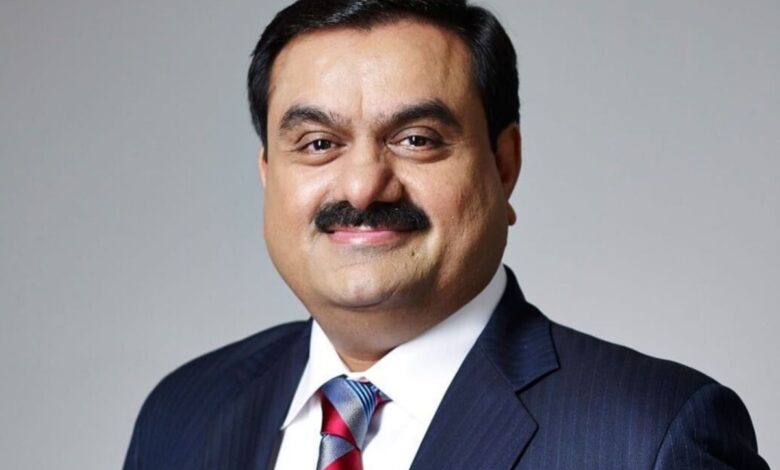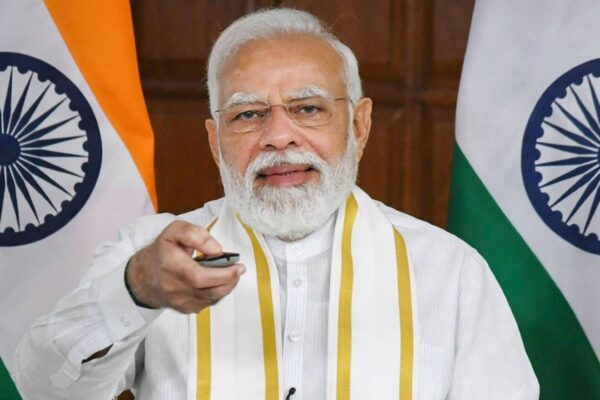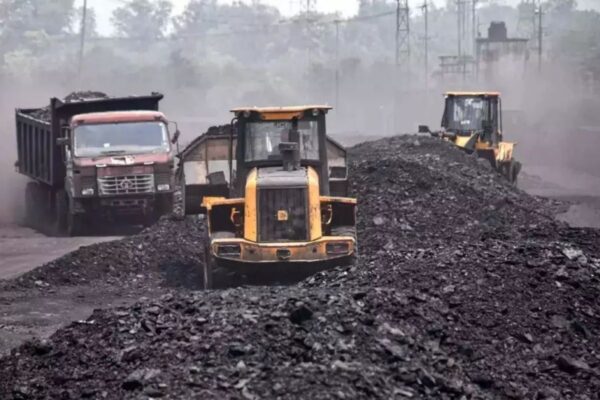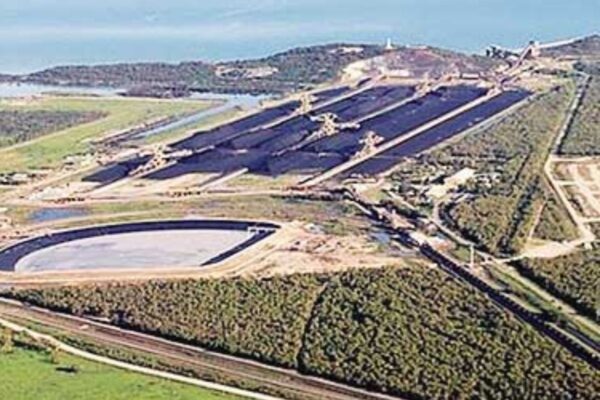Adani Promotes a Green Dream based on Coal to the world. What are the reactions of India’s Government?

The Third Richest Man Adani in the World Promotes a Green Dream Based on Coal to the World
The National Centre for the Performing Arts in Mumbai hosted Asia’s newest billionaire on stage one early April evening. The India Economic Conclave, a meeting of the nation’s financial elite, had Gautam Adani in attendance to deliver a lecture. He was a stocky man with a moustache.
Adani, who was at one time media-averse, has recently drawn more attention, and not just because his wealth has increased dramatically. This is due to the need for capital markets to finance his dream; a coal tycoon is now an advocate for renewable energy.
Adani is looking to rebrand himself for the global arena after embarking on a rapid diversification spree that has enlarged his sizable, primarily fossil fuel-driven company into several new sectors in and outside of India.
His public appearances now serve a new purpose: to persuade everyone that a coal tycoon has become an advocate for green energy, especially the gatekeepers of the global credit markets need to finance his ambitious goals.
Despite not being the only coal tycoon trying such a change, Adani is by far the wealthiest and one of the most powerful due to their contacts with Prime Minister Narendra Modi, India’s most powerful politician in decades. Only Elon Musk and Jeff Bezos are wealthier than Adani, whose fortune has risen to an estimated $143 billion thanks to rising energy prices and increases in the shares of his listed companies.
The tycoon’s business was built on his alliance with Modi, who, like Adani, is a native of Gujarat, a wealthy coastal state. In a world where environmental concerns are increasingly valued over Modi’s credo of economic progress, it may turn out to be Adani’s Achilles heel.
Adani was cautious to honour both parties in his speech to the India Economic Conclave.“India is set to see decades of expansion, which the rest of the world will want to seize. There can be no better defence of our interests at this moment than atmanirbhar, Adani said in his speech in Mumbai, emphasising the same nationalist theme that Modi emphasises in his speeches. The country will experience a “game changer,” he continued, as demand for green energy rises globally.
“For India, the mix of sun, wind, and green hydrogen brings up hitherto unimaginable possibilities.”
Adani has focused much of its business efforts on supporting Modi’s plans to grow India’s $3.2 trillion economy over the past ten years. Adani is thought to be the only billionaire who has a deeper relationship with the prime minister. He has linked his corporate objectives with those of the government, most notably by increasing his reliance on coal in response to Modi’s pledge to give more Indians access to supportive electricity.
International relations are included in the alignment. Officials from both countries claim that the Modi government pushed Adani to continue through with plans to build a sizeable port facility in Sri Lanka in 2021.

This is because the Modi government wants to reduce Chinese influence on the neighbouring island. Adani can be counted on to provide funding, and infrastructure, and create an expert policy purpose, whether it be for the construction of expressways or the modernization of data centres.
Adani, 60, has said he doesn’t receive or expected special treatment from the government, but that stance has benefitted for him. His seven publicly traded companies’ shares have a huge rise this year, increasing their combined market value to approximately $255 billion, or 7% of the whole Indian market. Adani is one of just two billionaires whose wealth hasn’t decreased in 2022 and is among the top 10 billionaires, and he’s the only one whose wealth has been primarily derived from coal.
Adani is now utilising those financial assets to further his goals, the centrepiece of which is a pledge to have $70 billion in green energy infrastructure by 2030. His business recently paid $10.5 billion to have the Indian operations of cement manufacturer Holcim Ltd.
They recently announced investments totalling $7.2 billion in alumina and iron ore projects. Moving into media and digital services, airports, data centres, and telecommunications are examples of such forays.
Tim Buckley, the director of the Sydney-based Climate Energy Finance think tank and a longtime observer of the billionaire, believes that Adani’s position is secure, at least within India, until Modi remains in power and his businesses continue to make enough money to pay off the sizable debt he has accumulated to finance expansion.
His political clout and aptitude for comprehending Indian politics, according to Buckley, are unparalleled. In contrast to many of their Indian counterparts, “the organisation works very, very effectively and they get things done.”
However, Adani’s influence is less certain outside of India. That’s where his extravagant wager on renewables comes into play. By the end of the decade, Adani wants to have his empire rank as the top generator of clean energy in the world thanks to the $70 billion pledge. However, Adani’s efforts to be taken seriously in the global arena risk being undermined by the disparity between his green investments to date and his exposure to fossil fuels.
Adani’s mining operations are said to be responsible for at least 3% of the world’s carbon-dioxide emissions from coal, according to SumOfUs, an activist group that launches online campaigns to put pressure on important corporations.
The Adani Group refuses to comment on this number or the overall context of the report. According to Nick Haines, a SumOfUs campaign manager in Melbourne, It’s challenging to see Adani’s green initiatives as anything other than a front for his company’s development into the coal industry, or at trying to have his cake and eat it too.

Coal has the foundation for Adani’s expansive business, and it still plays a key role in his operations. The Adani businesses on fuel generate 62% of the income for his group. Coal is a domestic resource that is crucial to Modi’s goals of national self-sufficiency, and Adani is India’s largest private coal mining developer. According to SumOfUs, he has acquired eight extra Indian coal blocks since 2020 alone, bringing the total to 17. In a 2019 interview with Bloomberg News, Adani argued that coal power must “play a large role” in increasing the nation’s electricity generation capacity to meet India’s economic ambitions.
After China and the US, India is the third-largest carbon emitter in the world. Although Modi has committed to achieving net-zero emissions by 2070, his timetable lags that of China by ten years and that of the US and UK by two decades.
Adani claims that his new green initiative is motivated by improving India’s energy security, although his time in Australia may at least account for the change. Adani is building a sizable mine in Queensland to supplement Indian supply, the opposition he has encountered there highlights the difficulty he will have in extending his power outside of India.
The project Carmichael has been continuously put off since it was first put up more than ten years ago due to legal disputes, protests, and government inquiries. Adani’s Australian mining division pleaded guilty in 2020 and was fined A$20,000 ($13,520) for lying to environmental regulators about the site’s need for land removal.
Due to the rejection of the proposal by Goldman Sachs Group Inc. and other financial institutions, Adani was left to finance the mine on his own. Activists fear that Carmichael’s important port expansion in ecologically fragile seas poses an unacceptable risk to wildlife, the Great Barrier Reef.
They are concerned about the impact on India’s power mix of importance in investment in the Australian coal extraction. Carmichael started exporting coal earlier this year, supporting India’s explosive demand for the fuel as summer temperatures rose.
Adani barely addressed coal at all during his 32-minute speech at the India Economic Conclave. People familiarise with the billionaire’s strategy claim that one of the billionaire’s motivations for increasing public appearances is to alter the impression of his company and better align himself with asset managers — and lenders — who are prioritising green energy and ESG.
The Adani Group claims to have 20.4 gigawatts of clean energy projects in the works, which is nearly 20% of the present solar capacity in the US. However, only around 25 per cent of it is already in use, mostly in the form of solar and wind farms in Indian states like Uttar Pradesh in the north and Karnataka in the south.
According to the environmental non-profit organisation Market Forces, the corporation is simultaneously continuing to pursue natural gas projects and is nearly tripling its coal-fired power capacity to 26 gigawatts. Since they are rising investments in coal and natural gas, the renewable energy goals are “by no means a pivot,” according to Rachel Cleetus, the Union of Concerned Scientists policy director for climate and energy. Adani is arguably the biggest private investor in new coal projects globally.
That’s where the money is, at least for the near future. Coal prices have reached a multi-year at their peak as a result of the Ukraine conflict’s restrictions on the energy supply, and the International Energy Agency expected records are breaking worldwide demand until 2024. To compensate for lower natural gas supplies, European countries like Germany and the Netherlands are reopening their coal-fired power facilities.
After attending the World Economic Forum in Davos, Switzerland, in late May, Adani couldn’t help but say, “I told you so.” He wrote on LinkedIn, “Developed countries that were creating targets and giving the rest of the world stern lectures about climate change suddenly look to be less censorious of their energy security is endangered.”
From his humble beginnings in Gujarat, Adani has come a long way to become the third-richest person in the world. He rose from 14th to that position in less than nine months. Adani, who was raised by middle-class textile merchants, they are enrolled in a local college to study commerce but quickly left. Before founding a trading company in 1988 that would later become Adani Enterprises Ltd., he dabbled in the diamond industry.
Adani was growing quickly as a local businessman at the time as India started to dismantle the “License Raj,” the intricate system of licences and rules that had previously governed commerce. His rising profile even at one time made him a target for gangsters, who allegedly abducted him and kept him for a $1.5 million ransom. 1995 saw the launch of Adani.

The facility is located on delicate mangroves and creek systems began to expand by the would-be tycoon. Later, his enterprises would be hit with a 2 billion rupee ($25 million) charge for disobeying environmental regulations; the fine was later withdrawn. In Mundra, according to Adani, the mangrove area grew by about 12% between 2011 and 2017, a time when the port experienced expansion.
In 2001, Modi, who was then a rising star in the Hindu-nationalist Bharatiya Janata Party, was selected to have Gujarat’s chief minister or governor in American parlance. Months later, one of India’s deadliest episodes of sectarian riots said that the lives of over 1,000 people in the state, the majority of whom were Muslims.
Adani also founded the semi-annual “Vibrant Gujarat” investment event to help the aspiring politician perfect his pro-business image, providing him with protection. According to the journalist James Crabtree’s account of the rise of India’s richest tycoons in his book “The Billionaire Raj,” “Adani and Modi enjoyed at least a marriage of convenience: the mega-project obsessed politician and the ambitious young industrialist, both are becoming indispensable to one another.”
When Modi won as prime minister in 2014, Adani entered a new era of success. Adani Enterprises undertook a difficult restructuring the next year, splitting up its power, transmission, and port activities into different publicly traded entities. Everyone benefitted from the new Indian ruler’s ambitious economic development plans, which included large financial investments in both energy and transportation infrastructure.
People who worked with Adani claimed the overall entirety of his different businesses, he maintained a hands-on managerial approach. The tycoon enjoys having in-depth discussions about the financial flows of certain businesses in meetings, according to those who were urged to stay nameless.
This empire’s construction necessitated borrowing on a scale uncommon in India. The Adani Group is the Indian company with the largest amount of foreign currency bonds at around $8 billion, according to statistics collated by Bloomberg. As of the end of March, the group’s total net debt was 1.6 trillion rupees ($20 billion), per company records.
Even after equity investments from international partners, CreditSights, a division of Fitch Group, has stated that the conglomerate’s leverage ratios and capital structures are “a cause of concern.” The Adani Group asserts that its KPIs are strong and that it has continuously reduced its debt over the previous few years.
This organization’s operations in India — as well as its power link — have come under scrutiny due to their massive scope. Adani won bids to run a variety of airport facilities through a federal government procurement roughly three years ago despite having no aviation experience.
The award was defined as “brazen cronyism” by the state of Kerala’s finance minister, where one of the airports is located. Indian media cited bureaucrats’ worries over Adani gaining different management contracts. The group has refuted such accusations in court documents submitted in response to legal challenges, and it has claimed that it won the contract through a competitive process.
Adani Expansion
More recently, MPs have an investigation into the remarkable share increases that propelled Adani business to some of the highest multiples in India. These funds were the largest investors in Adani companies and were located in Mauritius. India’s junior finance minister told the parliament last year that the matter is being investigated and that the capital markets authority is seeing if securities regulations are being obeyed.
He said that the firms are not being investigated by the Enforcement Directorate, which shows serious financial offences including money laundering. The representatives of Adani assert that the business has complied with all legal requirements and made all required disclosures.
Adani shows a different condition outside of India, as the circumstance in Australia shown. The expansion will subject Adani to a level of scrutiny he has never experienced, even though he has made other forays abroad and partnered with French oil giant TotalEnergies SE, which promised to invest $7.3 billion in Adani businesses, including his renewable energy and green hydrogen units.
Adani contacted the Science Museum, one of London’s most prestigious cultural organisations, regarding potential sponsorship a few years ago. According to records through a Freedom of Information request, the museum was concerned about the Indian billionaire as a philanthropist and consulted the Transition Pathway Initiative, a non-profit organisation that examines corporate compliance with climate targets.
The organisation places Adani Enterprises below Saudi Aramco and Exxon-Mobil Corp. in its second-lowest rung. The museum reported on a “spectrum of public concerns” and gave the Carmichael project a lot of attention. However, the government chose to move forward with cooperation anyway, supported by an unknown monetary grant. The organisation declared a new exhibition space dubbed “Energy Revolution: The Adani Green Energy Gallery” in October 2021.
Some people found the irony offensive. Activists a portion of the Science Museum’s interior in protest after two of its trustees quit. According to a spokesperson for the museum, “some people would prefer to see us sever all links with companies from carbon-intensive sectors, and we respect that perspective,”.
However, the spokesperson added that the museum believes the best course of action is to challenge businesses to do more to reduce emissions. According to the corporation, the independent Adani Green Energy Ltd. of the Adani Group is investing “at the massive scale essential to drive real change toward a low-carbon economy”.
Adani’s main concern right now is if the owners of the capital he needs to grow would share his perspective. While international lenders, including Standard Chartered Plc and Barclays Plc, have funded his budding green energy unit, one of the largest fixed-income investors in the world, Pacific Investment Management Co., declined to take part in a debt offering by Adani’s ports unit last year due to concerns about coal. Speeches touting the ambition of Adani’s green energy plans may not be enough to keep the money coming as global asset managers work to decarbonize their portfolios.
Adani Investors funding
Adani’s companies have been varying their funding sources. According to Deven Choksey, managing director at Mumbai-based brokerage KRChoksey Holdings Pvt., who has been following the Indian stock market for more than three decades, shares of Adani companies are now able to command a premium “because they are the only green energy and infrastructure-focused group in India that provide global investors access to these businesses through their listed companies.” “Ready-to-invest and ready-to-earn-returns from earlier built-up projects” are offered by the corporation.
Global investors are increasingly inclined to pose challenging questions to become more cognizant of the characteristics of a good green investment. Similar to how Adani is already increasing production at Carmichael to increase its yearly return by 50% more than what its board initially authorised in 2019.
To achieve his goals of developing an empire, the mogul could have to commit to giving up coal, according to Buckley of the Climate Energy Finance think tank. He will roll with the punch, he’s no mug, he said. ESG 2.0 is coming, and that doesn’t mean you should just talk the talk without truly walking the walk.




